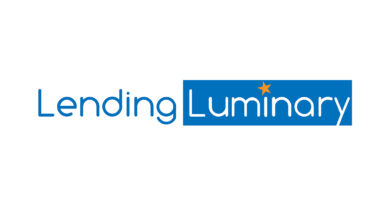Fraud Costs Up To 22.4% From Pre-Pandemic Levels
LexisNexis Risk Solutions released the findings of its 2022 LexisNexis True Cost of Fraud Study: Financial Services and Lending. This sixth edition of the report examines current fraud trends for more than 500 United States and Canadian financial services and lending companies and highlights key pain points related to the addition of new payment mechanisms, online and mobile channel transactions and international expansion. The survey was conducted between May and July 2022.
U.S. and Canadian financial services firms’ fraud costs continue to rise. Every $1 lost to fraud now costs U.S. financial services firms $4.23 compared to $3.64 in 2020, a 16.2% increase. The cost for Canadian financial services firms rose 19.6%, from $3.16 in 2020 to $3.78 in 2022.
The costs for credit and mortgage lending firms remain above pre-pandemic levels, although they are trending downward after substantial increases observed at the start of the pandemic. According to U.S. loan companies, each $1 in fraud losses costs $4.08. Canadian lending firms find that each $1 in fraud losses actually costs $3.74.
Key Findings of the True Cost of Fraud Study: Financial Services and Lending
- Attacks and Costs: Fraud costs and attack volumes for financial services firms remain significantly higher compared to before the pandemic. Costs continued to rise above early 2020 levels, with banks reporting the highest figure of $4.36 for every $1 of fraud loss. Mortgage firms also had a comparably higher cost of $4.20 for every $1 lost to fraud.
- Trends to Watch: Fraudsters targeting mobile channels, increased bot attacks, various scams and the rapid adoption of buy now, pay later (BNPL) are causing concern for financial services and lending firms. Mobile channels now generate a sizeable level of transaction volume and fraud costs. Banks and credit lenders are beginning to accept BNPL as a digital payment method, which respondents indicated represents one-third of the overall average transaction volume.
- Scams Impacting Customer Journey Risks: Scams are contributing to increased fraud costs, particularly creating more risk at the new account creation stage of the consumer journey. Scams impact fraud detection across consumer touchpoints by heightening challenges associated with digital identity verification, distinguishing bots from legitimate customers and balancing fraud detection with customer friction. Those dealing with multiple types of scams had a higher cost of fraud based on more labor/investigation efforts.
- Identity-Related Fraud: Lack of identity verification is a top challenge that contributes to fraud across the customer journey. With new account creation still trending upward, U.S. banks that deal with multiple types of scams attributed more identity-related fraud to new account creation. Canadian lending firms and U.S. mortgage lenders saw the biggest increase in identity-related fraud across account creation, with a 9% rise and 11% rise respectively since 2020.
“It’s clear that fraud has become more complex with various risks occurring simultaneously,” said Chris Schnieper, senior director of fraud and identity strategy, LexisNexis Risk Solutions. “To minimize fraud, organizations can no longer rely on manual processes or point solutions to reduce fraud, manual reviews and costs. Firms using a multi-layered solutions approach that integrates identity verification and authentication within digital consumer experience can lower their cost and volume of successful fraud. This approach improves identity verification and fraud detection effectiveness and lowers friction for trusted consumers.”

The Place for Lending Visionaries and Thought Leaders. We take you beyond the latest news and trends to help you grow your lending business.



